Russia is the world’s largest country in terms of surface area. It is no surprise that the country has over 200,000 lakes! These lakes are home to various flora and fauna – some of which are endangered. Some of Russia’s lakes are ten times larger than some states in the United States!
Here are 8 of the biggest lakes in Russia.
Lake Baikal
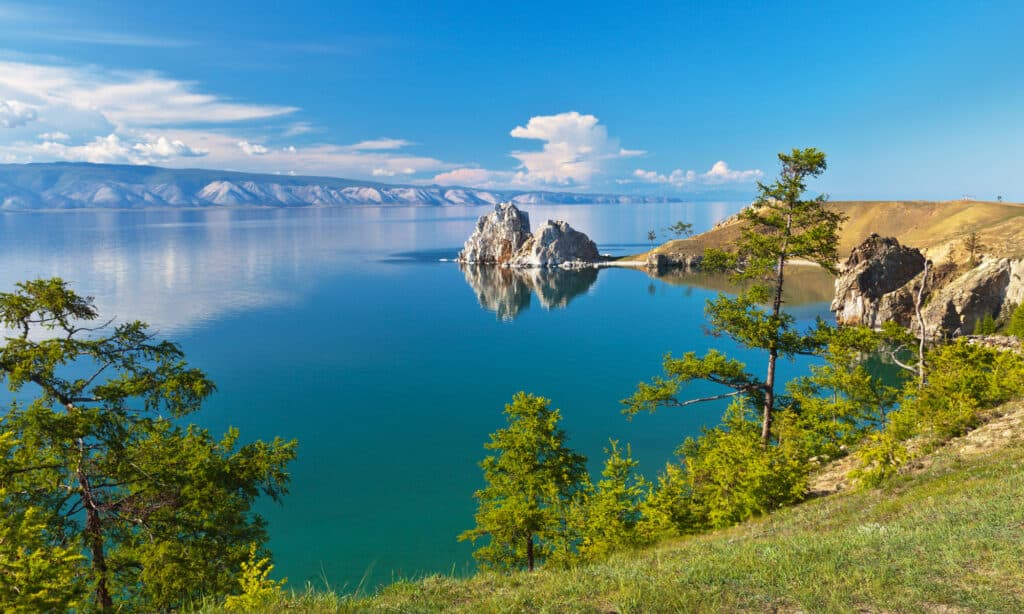
Also known as the ‘Blue Eye of Siberia’, Lake Baikal is a clear and mesmerizing freshwater lake.
©Katvic/Shutterstock.com
Lake Baikal is a clear and mesmerizing freshwater lake known by natives as the ‘Blue Eye of Siberia’. It contains 5,670 cubic miles of water and has a surface area of 12,248 square miles, making it the largest freshwater lake in the world by volume! It is also more than ten times the size of the USA’s Rhode Island.
During the winter months in Russia- especially January – the lake is known to freeze, allowing for wintertime sports such as ice-skating and dog sledding. Since Lake Baikal is so deep, many may wonder what creatures roam the depths of the world’s deepest lake. These creatures include sponges, amphipods, and limpet fish, among other freshwater gems of the lake.
An amazing fact is that when the lake is frozen, you can clearly see over 121 feet into the ice!
Lake Ladoga
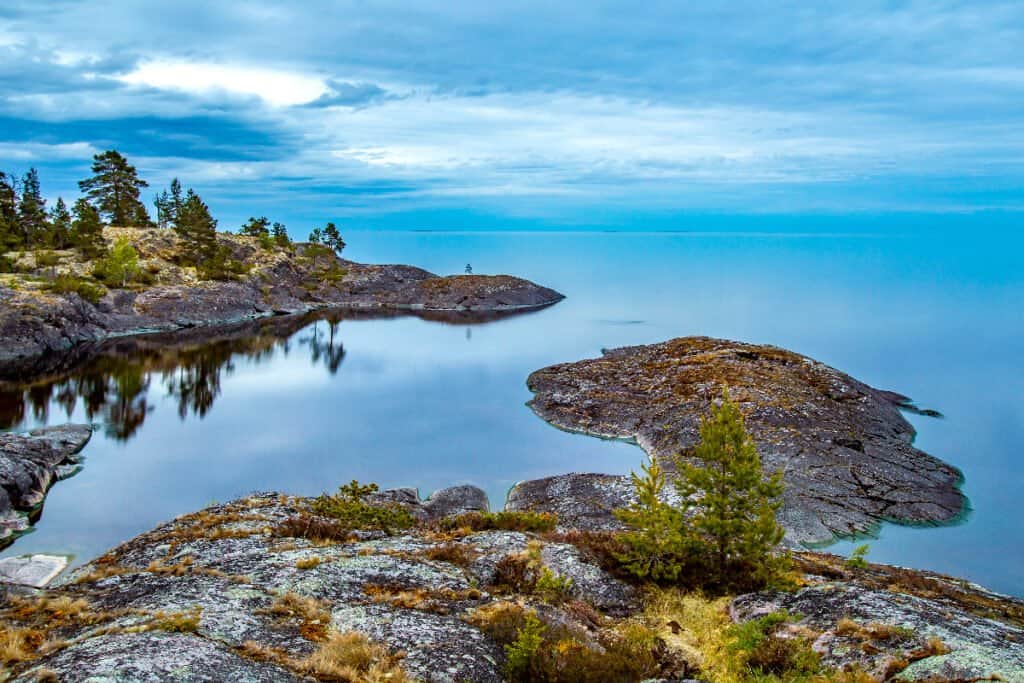
The Lake Ladoga is located in the vicinity of Saint Petersburg, northwest Russia. It spans an area of about 6700 square miles.
©FOTOGRIN/Shutterstock.com
Lake Ladoga is located in the vicinity of Saint Petersburg, northwest Russia. It spans an area of about 6700 square miles. The lake is known for its bountiful marine life and transportation. Lake Ladoga is known to have 48 fish species including Atlantic sturgeons, carp, breams, smelts, zanders, ruffes, and many others. It is quite a wonder that these fishes survive the extreme Russian weather.
The lake also serves as a source of drinking water for its surrounding settlements and is also used commercially for fishing. Lake Ladoga is known as the 14th largest freshwater lake by area in the world.
Lake Vostok

Russia’s Lake Vostok has a surface area of 4,830 square miles making it one of the largest subglacial lakes in Russia AND the world!
©Goddard Space Flight Center / This file is in the public domain in the United States because it was solely created by NASA. NASA copyright policy states that “NASA material is not protected by copyright unless noted”. (See Template:PD-USGov, NASA copyright policy page or JPL Image Use Policy.)
Lake Vostok is located 2.5 miles beneath Russia’s Vostok Station. It has a surface area of 4,830 square miles and is 1,700 feet deep at its deepest points. It is also one of the largest subglacial lakes in Russia and the world.
If you were to dive into this lake, you probably wouldn’t survive it- and if you did, you’d have quite a tale of pain to tell. First off, you would have to drill through 2.5 miles of thick ice to gain entry into the lake. If you are successful and able to dive into this lake, you would most likely feel pain as the pressure of the water would be immense. It would push against the air pockets in your ears as well as the air sacs in your body.
Despite this, the lake is inhabited by various marine animals such as brachiopods, sea anemones, tardigrades, and various species of fish. No one can tell just exactly how many species of creatures are in this lake. Due to the extreme conditions and temperatures, the lake hasn’t been fully explored yet!
Lake Onega
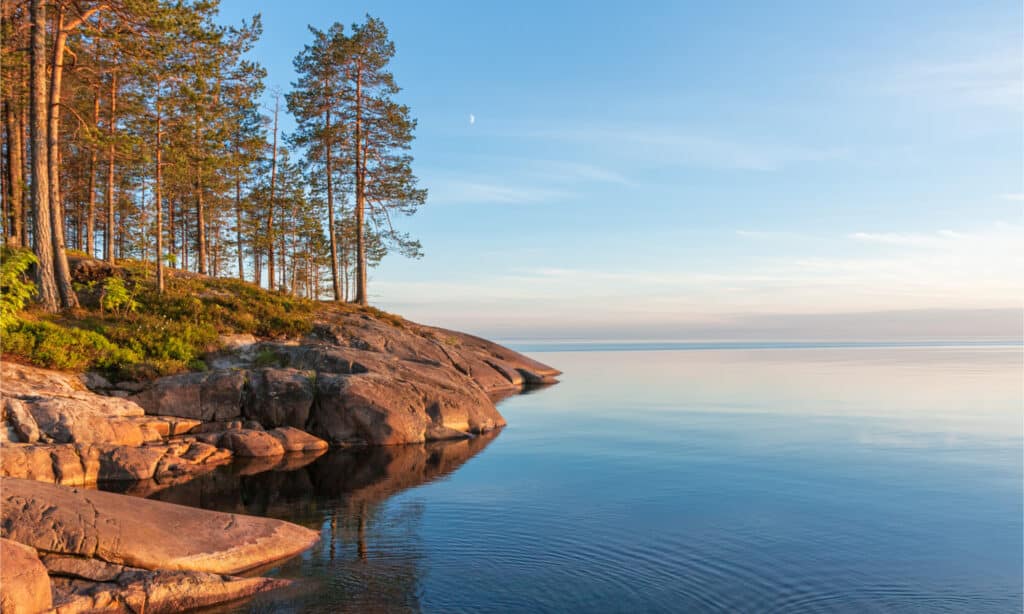
Lake Onega covers an area of 3,753 square miles and measures over 400 feet at its deepest.
©Shujaa_777/Shutterstock.com
Lake Onega is one of the most economical lakes in Russia. It is located northwest of Russia between Lake Ladoga and the White Sea. The lake covers an area of 3,753 square miles and measures over 400 feet at its deepest.
There are quite a number of memorable things about Lake Onega. Not only is the lake known as a major source of granite, black schist, and marble, but it is also known to have more than 40 species of fish. Some of the most commonly seen ones are breams, roaches, pikes, salmon, and perks. Lake Onega’s properties are the major reason for its high economic value.
Lake Taymyr
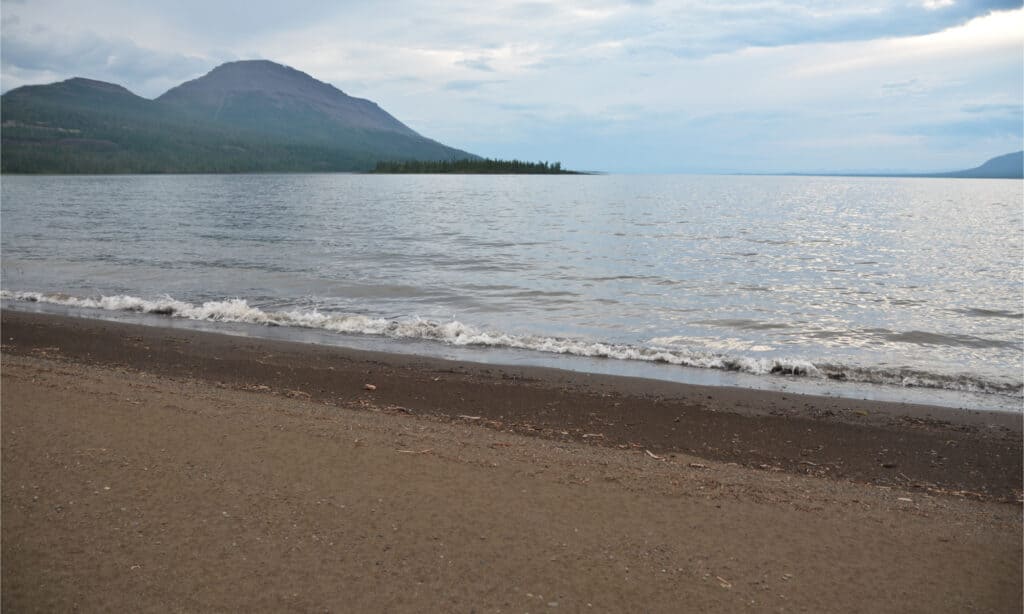
Located in one of the central regions of Taymyr Peninsula, Lake Taymyr covers an area of 1,760 square miles.
©Sergei Drozd/Shutterstock.com
Lake Taymyr is the largest freshwater basin of the Arctic. It is situated in one of the central regions of Taymyr Peninsula and covers an area of 1,760 square miles. As you can imagine, this lake gets really cold. It averages at minus 55.4° Fahrenheit and never gets hotter than 46.4° Fahrenheit.
Despite this, the lake is filled with various fish species which include sigs, muksuns, loaches, and graylings. Some of the lake’s fish feed on phytoplankton in the water. This lake has no marine mammals or higher plants.
Lake Taymyr has various popular fishing spots on the upper and lower Taymyr rivers. However, this allowance comes with various rules. Fishing during the spring spawning period is not allowed. There are also rules that guide the species of fish that people are allowed to catch. Endangered fish species, such as the endangered sturgeon, are off-limits.
Lake Khanka
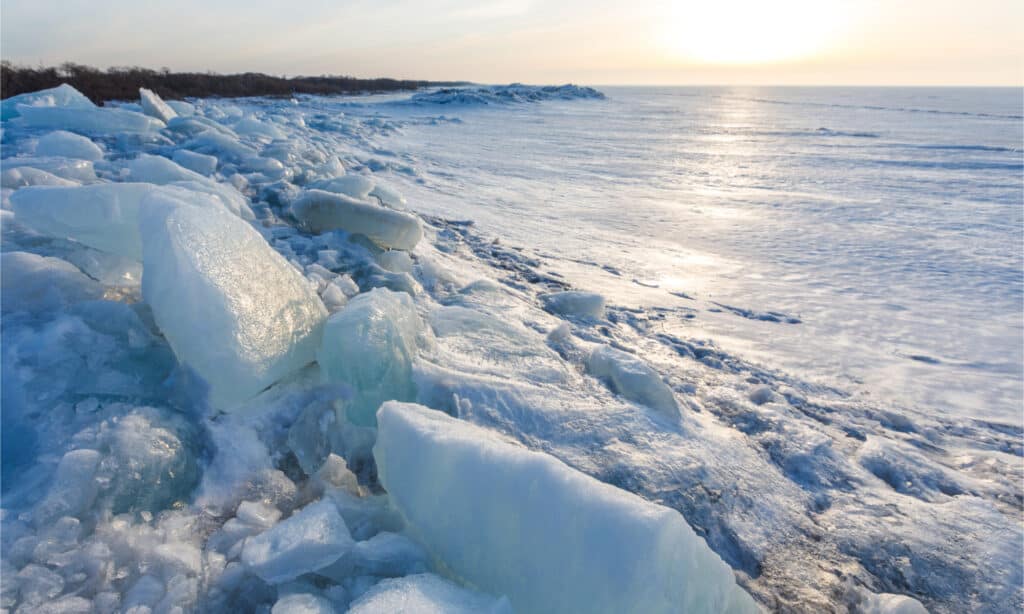
Lake Khanka is located on the border between Primorsky Krai, Russia, and Heilongjiang province in China.
©Alexander Khitrov/Shutterstock.com
Located on the border between Russia and China, Lake Khanka is a popular spot for humans and birds. Its surface area varies depending on climate conditions. However, its maximum size was recorded at 1,930 square miles, making it one of the largest lakes in Russia and in China, where it is fondly referred to as ‘the Emerald of Northern China.’
There are more than 75 species of fish in Lake Khanka, including the Amur catfish, pike, common carp, and grass carp. The area is also known for housing the largest population of extremely rare Chinese soft-shelled turtles in the Russian Far East and is home to amphibians like the bell toad and the Asiatic grass frog.
Lake Peipus
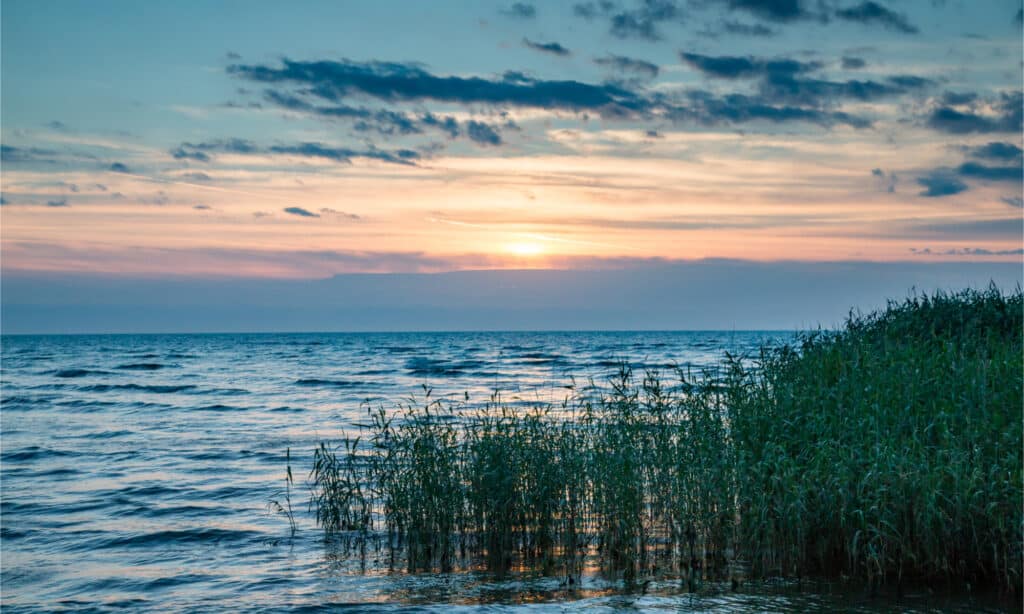
Lake Peipus lies on the border between Estonia and Russia. It has an area of over 1300 square miles.
©Katiekk/Shutterstock.com
As the largest transboundary lake in Europe, Lake Peipus lies on the border between Estonia and Russia. It spans an area of more than 1300 square miles, making it one of the five largest lakes in Europe.
It is bordered by woods, marshes, and sand dunes. Though it freezes over for close to six months in a year, it is still a tourism destination. The lake is fished for its smelts and the winter doesn’t stop fishing enthusiasts from ice fishing. Besides the smelts, other fish species in Lake Peipus are the Peipsi whitefish, bream, European perc, roach, and pike.
The lake has 35 islands but very few are inhabited, as most are wetlands.
Lake Uvs

Located between Mongolia and the Tuva Republic of Russia, Lake Uvs spans an area of about 1290 square miles.
©Ganzorig Miimaa/Shutterstock.com
Lake Uvs is located between Mongolia and the Tuva Republic of Russia, spanning an area of about 1290 square miles. Because of its geography, the lake is home to various migratory species of birds. Some of the endangered bird species at and on the lake include the black stork, black-headed gull, whooper swan, white-tailed eagle, etc.
Lake Uvs is also unique for its salinity which causes a unique ecosystem as there are barely any edible fish in the lake, despite possessing about 28 fish species. One of the few known edible fishes in the lake is Potanini Altai Osman.
An interesting fact about Lake Uvs is that it has no streams flowing outwards.
The photo featured at the top of this post is © Shujaa_777/Shutterstock.com
Thank you for reading! Have some feedback for us? Contact the AZ Animals editorial team.






